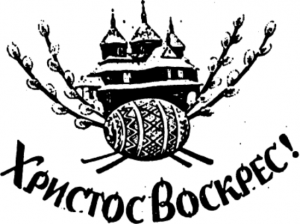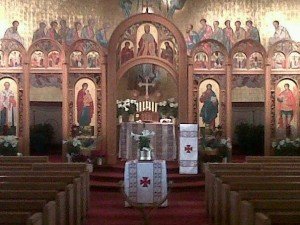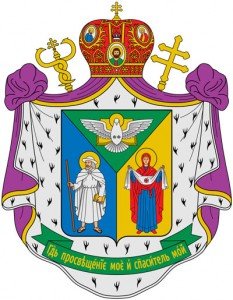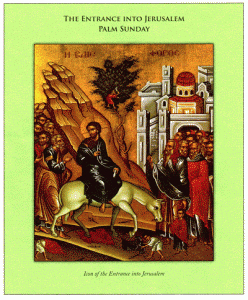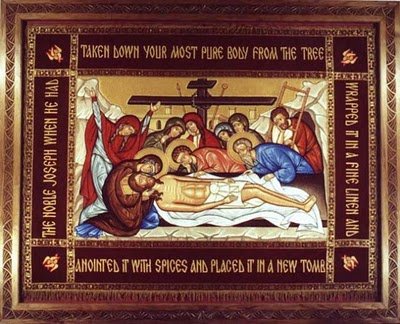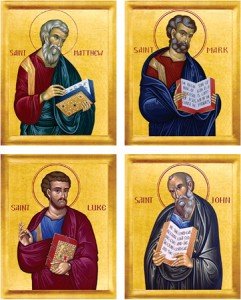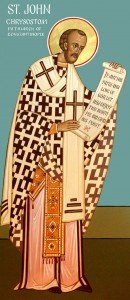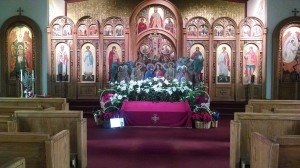 In order to truly enter into the joy of the great feast of Pascha, I believe that it is important to know something about this feast.
In order to truly enter into the joy of the great feast of Pascha, I believe that it is important to know something about this feast.
In our Eastern Church the truly most appropriate name for this feast is Pascha. The origins of the word “Easter” are not certain, but probably derive from Estre, an Anglo-Saxon goddess of spring. The German word Ostern has the same derivation. Our Church traditionally follows the Greek term that was used in the early Church: Pascha, which is derived from the Hebrew Pesach or Passover. Our own Ukrainian usage is either the Great Day or Velikden. I will attempt to share with my readers why the named Pascha is truly a more appropriate name.
The Great and Holy Week comes to an end at sunset on Great and Holy Saturday, as the Church prepares to celebrate her most ancient and preeminent festival, Pascha, the feast of feasts. The time of preparation will give way to a time of fulfillment. The glorious and resplendent light emanating from the empty Tomb will dispel the darkness. Christ, risen from the dead, cracks the fortress of death and takes “captivity captive” (Psalm 67:19). All the limitations of our createdness are torn asunder. Death is swallowed up in victory and life is liberated.
Pascha is the dawn of the new and unending day. The Resurrection truly constitutes the most radical and decisive deliverance of humankind. The Resurrection of Jesus Christ is the fundamental truth and absolute fact of the Christian faith. It is the central experience and the essential kerygma or preaching of the Church. It confirms the authenticity of Christ’s earthly life and vindicates His teaching. It seals all His redemptive work: His life, the model of a holy life; His compelling and unique teaching; His extraordinary works; and His awesome, life-creating death. Christ’s Resurrection is the guarantee of our salvation. Together with His Ascension it brings to perfection God’s union with us for all eternity.
The Resurrection made possible the miracle of the Church, which in every age and generation proclaims and affirms “God’s plan for the universe, the ultimate divinization of man and the created order.”
And what is God’s plan for the universe? That it should increasingly reflect His, God’s, love and glory. It is God’s plan that we humans, who are created in His image and given the potential to grow in His likeness as manifested in Jesus Christ, might freely and voluntarily return His love and offer Him praise. In order for us to become a reality, we had to be freed from those things that limit our growing in the likeness of Jesus. So, just as Yahweh, the God of Israel, freed the Jews bondage and captivity so that they might freely offer Him praise, so God, through the actions of Jesus, freed us from captivity to our natural tendencies and fears. So, in effect, Jesus brings about a NEW PASSOVER by freeing us from DEATH and the fear that we naturally have about death and gave us a model of a new way of living that can bring about the fullness of life. So the name Pascha conveys this idea of a NEW PASSOVER.
However, the Resurrection has not yet abolished the reality of death. But it has revealed its powerlessness. We continue to die. Our bodies decay and fall away. Thus, physical death does not destroy our life of communion with God. Rather, we move from death to life – from this world to God’s reign.
Our Church calls us to embrace the celebration of Pascha in the same manner as our Jewish brothers and sisters celebrate Passover. It must be a personal experience of being freed from the captivity of thinking only like human beings instead of thinking like children of God. We must also personally try to sense that we have been freed from the fear of death and that we have a way of living that will allow us to voluntarily return God’s love and offer Him the praise that He so very much deserves from us.
This all requires, however, that we take our faith seriously and embrace the teachings of Jesus Christ. It means that we should not attempt to water down the challenge that Jesus gave us, namely to love all other human beings, whether neighbor or enemy, as ourselves and to treat all others as Jesus treated the people that entered into His life. This means accepting the challenges of life as opportunities to grow in our union with God and take personal responsibility for our own thinking and behaviors.

